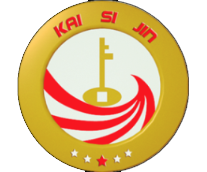What is an
injection Mold? In fact, the mold used in
Injection Molding of plastics is injection mold. The injection mold can form plastic products with complex shape and high scale accuracy, perhaps with inserts. Injection mold is more complex and precise than other molds in structure, so we usually have higher requirements for operation and protection of products. Therefore, it is of great significance for an enterprise to correctly use, carefully protect and maintain in all production processes, because it can improve the efficiency of an enterprise while maintaining its normal production.
How to protect and maintain the injection mold? Before this, we should first know the structure and composition of the injection mold, so that we can better protect and maintain the injection mold.
I will briefly introduce the structure and composition of the
injection mold:
1. Molding parts of injection mold. The first is to give the structure, scale and shape of the parts of the molding data, which are generally composed of concave and convex dies, that is, cavities and cores, as well as thread cores and inserts;
2. Guide part of injection mold. The setting of guide components is mainly to ensure that the fixed mold and moving mold can be accurately aligned when they are closed. The guide components are composed of guide sleeve and guide pillar. Some molds are also equipped with guide components on the ejector plate. This is intended to ensure that the demoulding organization can move stably and reliably;
3. Demoulding organization of injection mold. The demoulding organization is the equipment that can complete the demoulding of the runner system and plastic parts. It has many structural forms. The most common demoulding organizations are pipe jacking, top plate, ejector rod, pneumatic ejection and rotary demoulding, which are generally composed of reset rod, ejector rod, catapult ejector rod fixing plate, top plate guide post/sleeve and top plate (top ring);
4. Core pulling organization of injection mold. The core pulling organization is to ensure that the plastic parts with side recesses or side holes can be smoothly demoulded when they are ejected. Because these plastic parts need to be laterally split and cored before they are ejected, and lateral parting is also called parting slider;
5. Injection mold casting system. The pouring system is generally composed of a splitter, a main runner, a cold charging well and a gate. It is the channel through which the molten plastic is led from the nozzle of the injection machine to the closed mold cavity;
6. Mold temperature conditioning system of injection mold. The mold temperature conditioning system is the equipment for mold temperature conditioning. The common hot water, cooling water, cool air, steam, hot oil and electric heating systems are all mold temperature conditioning systems. The mold temperature conditioning system is primarily to meet the mold temperature requirements of the injection molding process;
7. Exhaust system of injection mold. The exhaust system is generally an exhaust slot set at the parting surface of the mold, which can smoothly discharge the gas in the mold cavity. The space between the push rod of many molds or other moving parts, such as the slider, may actually play the role of exhaust;
8. Other structural parts of injection mold. Others, such as fixed plate, fixed/movable template, support plate, stay head and connecting screw, are all parts set to meet the requirements of mold structure. We will say that they are uniformly included in other structural parts.
